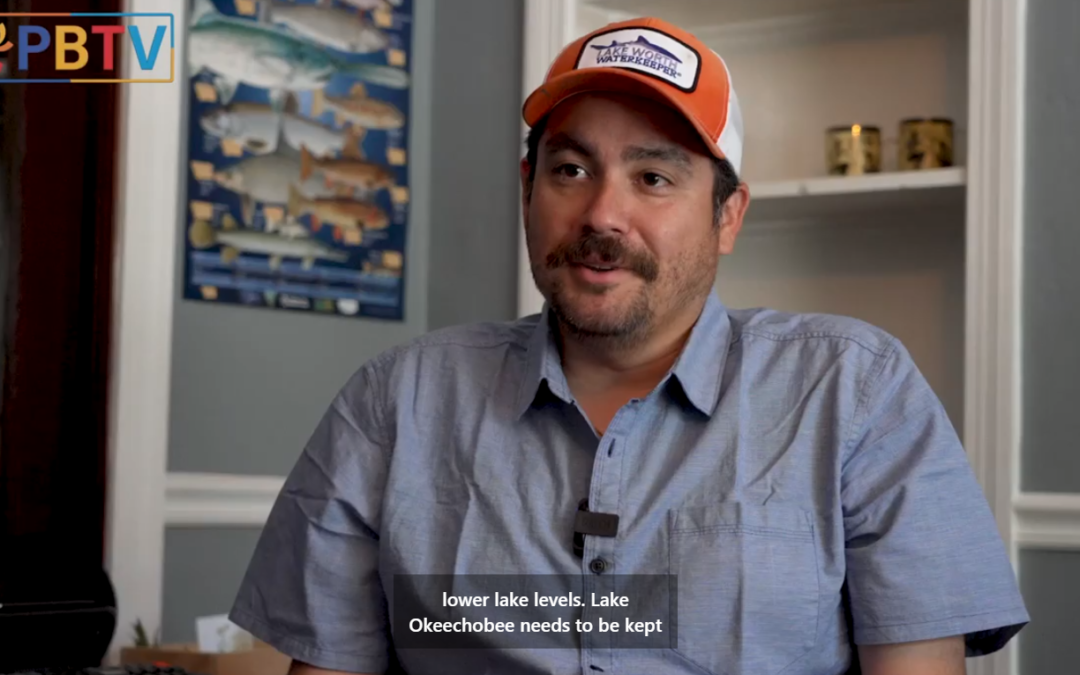
Town of Palm Beach sends resolution on Plan CC to the South Florida Water Management District
Your Lake Worth Waterkeeper discusses a resolution sent from the town of Palm Beach to the South Florida Water Management District concerning Plan CC.

Your Lake Worth Waterkeeper discusses a resolution sent from the town of Palm Beach to the South Florida Water Management District concerning Plan CC.
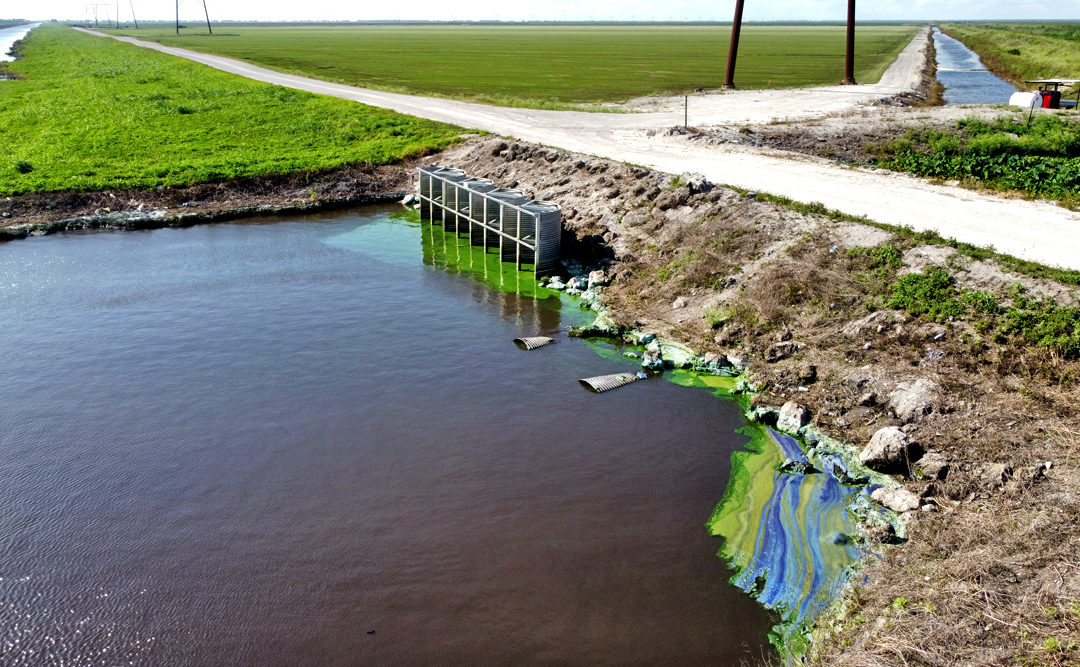
Several conservationists, including Lake Worth Waterkeeper Reinaldo Diaz, spoke with WPBF 25 News about the Army Corps decision for a preliminary plan Monday, saying it is a big sigh of relief as they feel heard for the first time.
“It’s definitely not a final ‘we are done, we can wrap it up.’ It’s a big step in the right direction,” Diaz said.
The Army Corps decided to go with “Alternative Plan CC” as they write the new Lake Okeechobee operating manual, known as LOSOM, which will guide decisions for at least the next decade.
“I’ve been fighting for this clean water because I want it to be like it was when I was growing up and there weren’t these toxic algae blooms. There weren’t these discharges,” said Mark Perry, Rivers Coalition President and Florida Oceanographic Society Executive Director.
The preliminary plan greatly reduces freshwater flows into the St. Lucie estuary instead sending water south into the Everglades and some west to the Caloosahatchee River.
“We don’t want a single drop,” said Michael Conner, Indian Riverkeeper executive director. “We never wanted a single drop. We were the unfortunate recipients of all this water over all these decades which has had drastic effects on our estuary.”
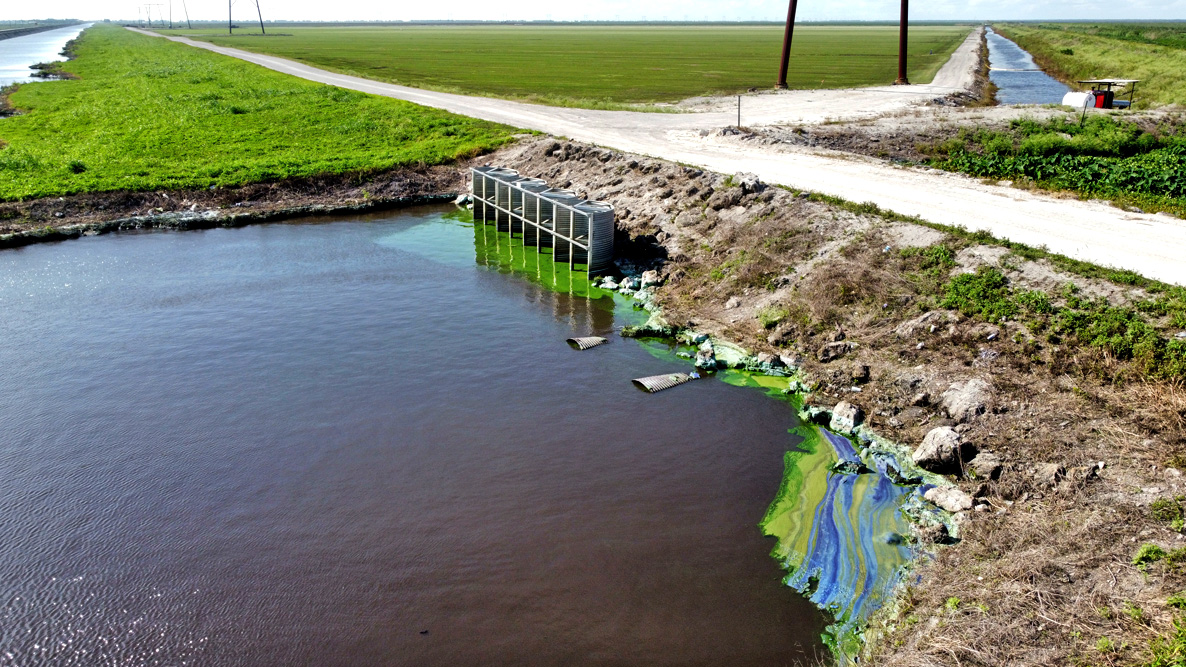
Photo credit: Lake Worth Waterkeeper
But some said one of the concerns with the new plan is that it keeps Lake Okeechobee water levels too high for too long.
“That unfortunately is not good for the health of the lake,” Perry said. “The Lake Okeechobee needs to fluctuate from dry to wet period.”
For the Indian Riverkeeper, the new plan could mean the revival of industries, which have been impacted by the effects of toxic discharge.
“Kills sea grass,kills our oysters, hurts our economy when people see the cyanobacteria blooms in our water ways here,” Conner said. “You know the fishing industry, the tourism industry, the real estate values all suffer.”
The Lake Worth waterkeeper said he believes the people of Palm Beach County will also see less toxic water coming into the waterways if the plan moves forward.
“This choice of CC is really the first time that we see that we actually have, you know, a meaningful seat at the table and not just participating in public, but they are listening,” Diaz said.
Right now, the Army Corps will move forward with optimizing and tweaking the plan, they will be taking public input until they make a final decision in August.
The plan should become operational in late 2022.
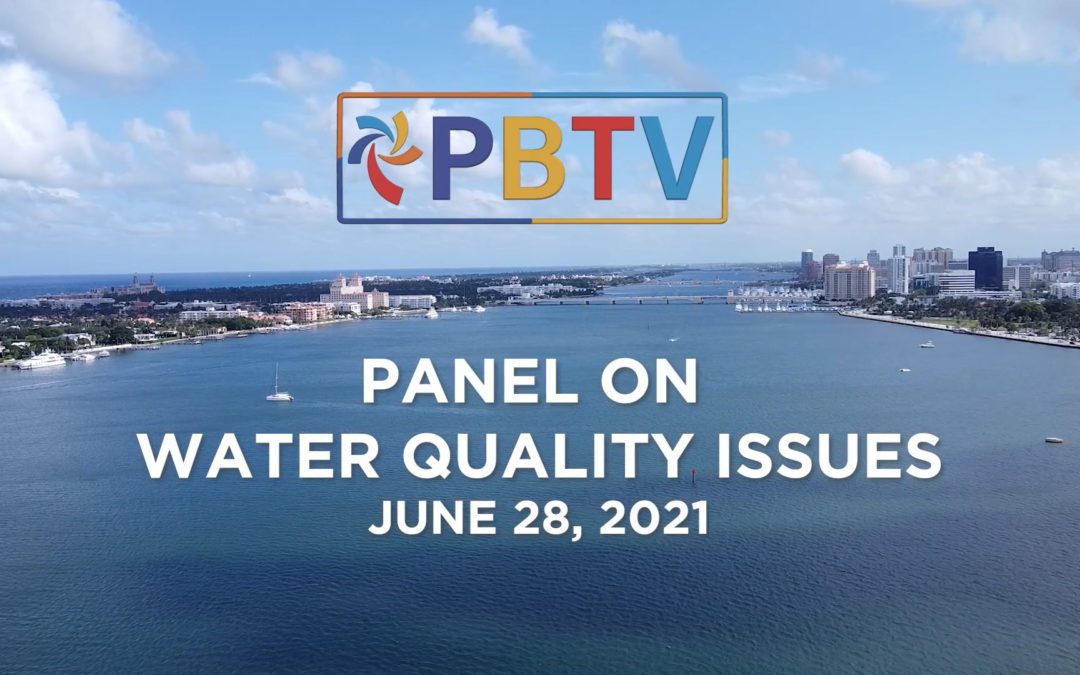
The Palm Beach Civic Association held a panel discussion on our local water quality issues.
The panelists included:
Attorney Reinaldo Diaz
The Lake Worth Waterkeeper
Dr. Steven Davis
Chief Scientist With The Everglades Foundation
Attorney Lisa Interlandi
Everglades Law Center
Tom MacVicar
A Water Management Consultant, MacVicar Consulting Inc.
Dr. James Sullivan
A Member Of The Blue-Green Algae Task Force and Executive Director of FAU’s Harbor Branch Oceanographic Institute
The panel was hosted by Palm Beach Civic Association Communications Department members Wendy Rutledge and William Kelly.
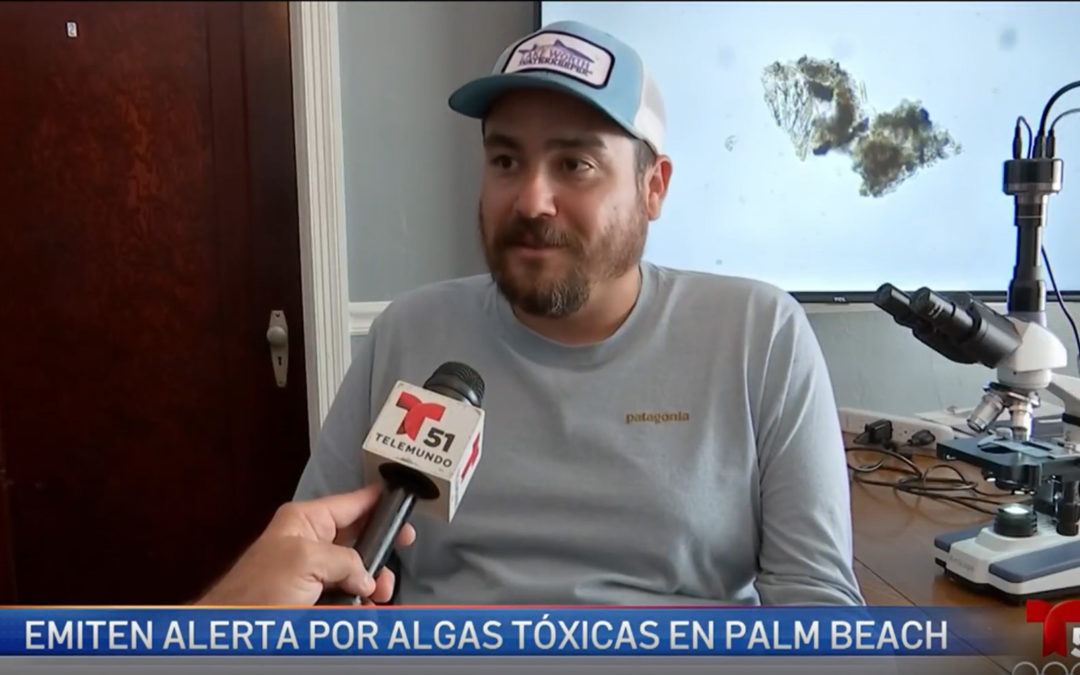
Las autoridades han estado colocando afiches advirtiendo sobre la posible presencia de algas tóxicas en los canales, pero para un experto con el cual hablamos esta advertencia no refleja la severidad del problema.
Reinaldo Diaz, de la Organización Lake Worth Waterkeeper, dice: “Es un problema de salud pública muy serio”.
Este lunes el dpto. de salud del condado Palm Beach emitió una nueva alerta a raíz de la presencia de algas tóxicas en el canal c51 que llega hasta Lake Worth. Anuncios en distintos lugares advierten de los peligros. Para Reinaldo Diaz los peligros son más severos
Reinaldo Diaz, dice:
“La alerta no captura eso, dice cosas como que si limpias, lavas el pescado que tu agarraste de esa agua, con poca agua fresca que va a ser suficiente para comerlo y la verdad eso no es honesto no es transparente en el peligro que este problema lleva”.
Y es que estas algas tóxicas son nocivas para la salud y un especial peligro para niños y mascotas. Esta residente hace una advertencia.
Pamela McAfee, dueña de mascota que murió, dice: “Quienes estamos en el canal C 51 no vivimos en un ambiente seguro”.
Y es que fue el perro de Pamela, Bella, quien murió el pasado 25 de mayo por haber tomado agua del canal.
“Hicimos todo lo posible por salvarla, pero no pudimos”.
Cuando murió la perra, muestras de su vomito fueron enviados a un laboratorio. Reinaldo se comunicó con la dolida dueña del perro.
“Salió el resultado que el perro tenía en su sistema niveles de Ciano bacterias muy altos”.
Las descargas de agua del lago Okeechobee, llena de fertilizantes el lago, y atraviesan el condado y llegan hasta West Palm Beach. Pero no solo existe riesgo al estar en contacto con esta agua o tomarla, el peligro es aún mayor
“Hay estudios que dicen que puedes estar a 20 millas de distancia del agua que está contaminada con esto y con el viento levanta está Ciano bacterias y puede viajar por el aire y nosotros podemos respirarlo así de lejos”
Segun Reinaldo Diaz, una de las soluciones para este importante problema es sencilla, pero acarrea un complejo proceso este es la restauración de los Everglades.
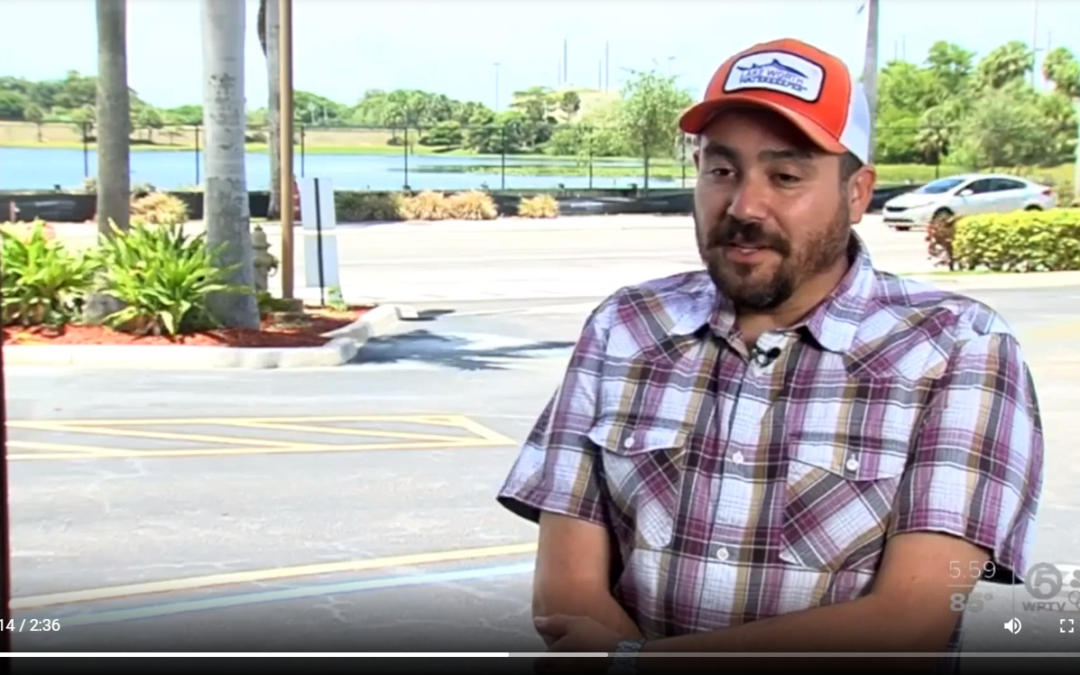
Algae has been spotted on the M canal, which feeds into the West Palm Beach watershed.
It’s unclear if the algae is toxic, but signs were spotted warning the public of the dangers.
The algae slick was spotted over the weekend 25 miles west of West Palm Beach by Lake Worth Waterkeeper, an environmental group.
“M canal is sitting pretty stagnant now because we’re at the tail end of the dry season. Eventually, it’s going to start raining, and when that happens, we suspect the M canal, just like all the other canals, will start filling up, and water will start flowing again,” said Reinaldo Diaz of Lake Worth Waterkeeper.
The algae issues continue in area waterways after an advisory was in place for nearly a week in West Palm Beach.
That advisory was lifted Friday morning after officials said all customers can now safely drink the city’s tap water.
Dr. Poonam Kalkat, West Palm Beach’s utilities director, said the city is now drawing water from underground aquifers and closely monitoring surface water that reaches the treatment plant.
“If we see any algal growth, we immediately isolate that area and treat it so we don’t have chances of it coming to the plant,” Kalkat said Friday as water restrictions over algae were lifted.
Health Alert in Palm Beach County
The latest round of testing of the C-51 canal led the Florida Health Department in Palm Beach County to issue a health alert for blue-green algae Monday.
The department said tests on June 2 discovered the algae in the canal at Southern Boulevard and Military Trail and at Forest Hill Boulevard and Interstate 95.
The public is urged to avoid coming into contact with the water.
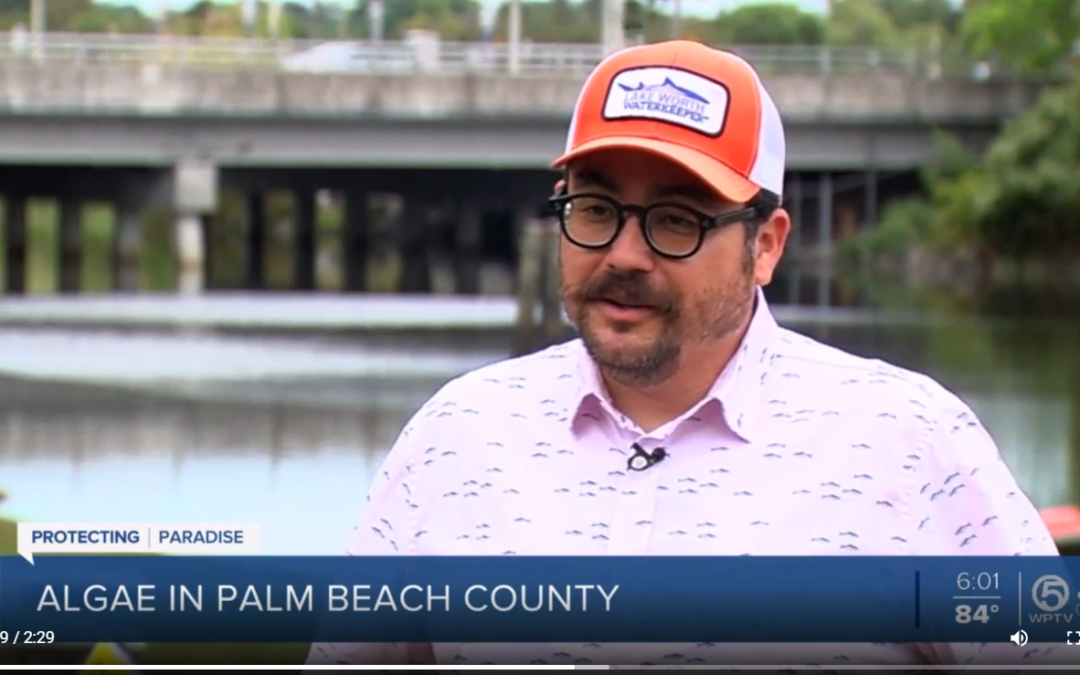
In past years, algae has mostly been a problem that has impacted Martin County and other parts of the Treasure Coast.
However, residents in Palm Beach County are seeing the green slime show up in some waterways with summer still about a month away.
Algae was spotted Friday in the C-51 canal near Summit Boulevard north of the town of Lake Clark Shores.
Also, a “health alert” sign was posted at Spillway Park in Lake Worth Beach saying that blue-green algae are in these waters.
WPTV has reached out to the Florida Department of Health in Palm Beach County to see if they can confirm if there is toxic algae in the waterway.
The algae was showing up in a canal beyond the backyard of resident James Sylvester, who lives on Lake Clarke.
“The other day there was more than this,” Sylvester said.
He said the bloom first appeared a couple of weeks ago and was more noticeable in front of his home.
The South Florida Water Management District insists there have been no water releases from Lake Okeechobee into the C-51 canal and the Lake Worth Lagoon. They are testing samples of the water and the results should be back by Monday.
Concerns over the lake water intensified weeks ago when a large algae bloom impacted the Pahokee Marina.
Reinaldo Diaz is with the Lake Worth Waterkeeper, a nonprofit group dedicated to protecting these waters.

When it comes to algae, he said these waterways can be impacted as much as the Treasure Coast.
“The Lake Worth watershed covers pretty much all of Palm Beach County. It’s a complex watershed, but what we know is when it comes to major cyanobacteria bloom the common denominator is its Lake Okeechobee water,” Diaz said.
All of this makes Sylvester worry about how bad it could get.
“Oh, yeah it’ll be worse by summer,” Sylvester said.
Harmful algal blooms happen when they grow out of control while producing toxins. This can be fueled by warm water and increased nutrients.
Microcystins are toxins that can form in blue-green algae.
“This summer is looking to be what we call another ‘lost summer,'” Diaz said.
The Army Corps of Engineers has been feeling political pressure to hold off on water releases, which help control lake levels but can also lead to algae blooms in waterways.
U.S. Rep. Brian Mast, R-Florida urged the head of the U.S. Army Corps of Engineers in a Friday letter to visit communities impacted by harmful water releases from Lake Okeechobee.